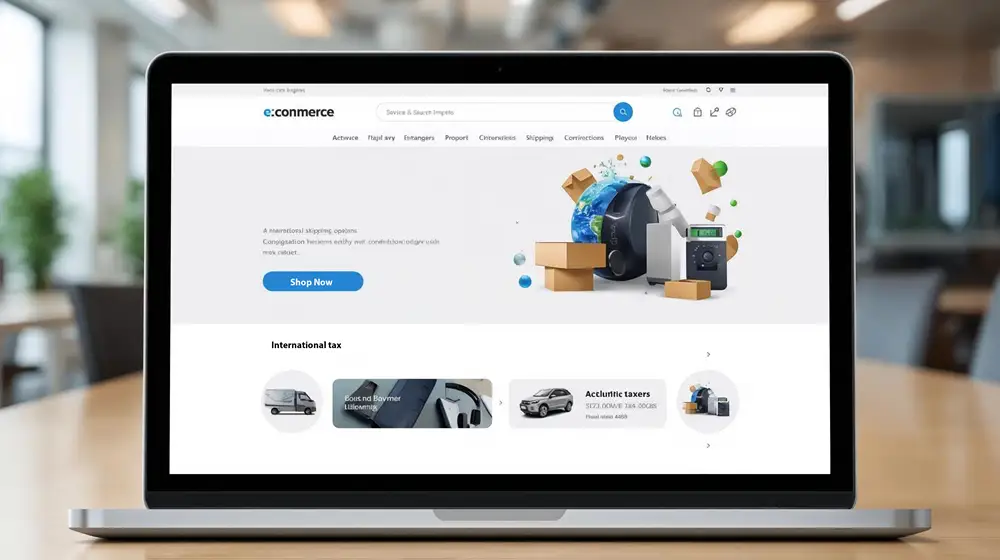
How to Build an SEO-Optimized E-commerce Website to Rank Higher in Search Engines
In a world where over 80% of online shoppers begin their journey with a search engine, building an SEO-optimized e-commerce website is not just a best practice—it’s a necessity. Whether you're launching a new store or optimizing an existing one, SEO is the bridge between your business and thousands of potential customers.
This comprehensive guide will walk you through how to build an SEO-friendly e-commerce website that ranks higher on Google, Bing, and beyond—using proven strategies, tools, and techniques tailored for 2025.
Why SEO Matters for E-commerce
Search Engine Optimization (SEO) ensures your online store appears when users search for:
- Products you sell
- Solutions you offer
- Brand-related terms
Benefits of SEO for E-commerce:
- Free, recurring traffic
- Higher conversion rates from search-intent buyers
- Better user experience (UX)
- Reduced ad spend over time
Step-by-Step: How to Build an SEO-Optimized E-commerce Website
1. Choose an SEO-Friendly Platform
Select a CMS that offers built-in SEO tools, speed optimization, and mobile responsiveness.
Top choices in 2025:
- Shopify (Fast & secure, great for beginners)
- WooCommerce (Highly customizable with WordPress SEO plugins)
- Magento (Adobe Commerce) (For enterprise stores)
- Ambala IT (Custom-built SEO-first platforms in Asia)
✅ Pro Tip: Make sure the platform supports custom URLs, meta tags, and schema markup.
2. Perform Keyword Research
Use tools like:
- Google Keyword Planner
- Ahrefs / SEMrush
- Ubersuggest
- SurferSEO
Focus on:
- Product keywords: “leather laptop bag for men”
- Category keywords: “travel accessories”
- Long-tail keywords: “best baby shoes under 1000 BDT”
3. Create a Clean URL Structure
Good:
example.com/men/leather-laptop-bag
Bad:
example.com/product?id=1258349
Tips:
- Use hyphens (
-) not underscores (_) - Avoid dynamic parameters
- Keep it short and descriptive
4. Optimize Title Tags and Meta Descriptions
Title Tag (≤ 60 characters):
Buy Leather Laptop Bags for Men – Free Shipping | BrandName
Meta Description (≤ 160 characters):
Shop premium leather laptop bags for men. Stylish, durable, and delivered free. Order online now!
⚠️ Use power words, your brand name, and CTAs
5. Write Unique Product Descriptions
Avoid using manufacturer content. Write engaging, benefit-driven, and keyword-optimized descriptions for each product.
Example: “Our handcrafted leather messenger bag combines vintage charm with modern functionality—perfect for work or travel.”
6. Use Header Tags Properly (H1, H2, H3)
Each page should have one H1 tag (product or category name). Use H2 and H3 to organize features, specs, and FAQs.
7. Optimize Product Images for SEO
- Use descriptive file names:
brown-leather-backpack.jpg - Add alt tags:
Alt="Men’s Brown Leather Backpack with Padded Laptop Sleeve" - Compress images to boost page speed (use WebP or AVIF formats)
8. Add Schema Markup (Structured Data)
Implement JSON-LD to highlight:
- Product ratings
- Prices
- Stock availability
- Breadcrumbs
This enhances how your pages appear in SERPs with rich snippets.
9. Build Mobile-First, Fast-Loading Pages
- Use responsive design (works on all devices)
- Enable lazy loading for images
- Use Google’s PageSpeed Insights and Core Web Vitals tools
- Host on a CDN-powered, secure server
10. Create High-Quality Content That Supports Sales
- Blog: Write SEO-optimized blogs like “Top 10 Winter Jackets for Men in 2025”
- Buying Guides: Help users choose the right product
- FAQs: Rank for long-tail questions
Blogging increases indexed pages and internal linking opportunities.
11. Internal Linking & Navigation
Ensure your site architecture is flat and links to:
- Categories
- Subcategories
- Individual product pages
Ideal: Homepage → Category → Subcategory → Product
12. Use Secure HTTPS and SSL Certificate
Security is a ranking signal. Make sure your site has a valid SSL certificate (https://).
Essential SEO Tools for E-commerce in 2025
| Tool | Purpose |
|---|---|
| Ahrefs | Keyword & backlink research |
| SurferSEO | Content optimization |
| Screaming Frog | Technical audits |
| Yoast / Rank Math | WordPress SEO management |
| Google Search Console | Performance tracking |
| Hotjar | User behavior tracking |
Before:
- Slow load time
- Generic product descriptions
- No structured data
After:
- Improved speed (+72%)
- Custom SEO-friendly copy
- Added product schema + rich results
Need an Expert Touch?
Ambala IT specializes in SEO-optimized e-commerce development that’s fast, secure, mobile-ready, and built for conversions.
✅ On-page SEO
✅ Custom UI/UX design
✅ Speed optimization
✅ Advanced tracking & analytics
✅ Ongoing SEO support
👉 Contact us to get your FREE SEO audit today!





